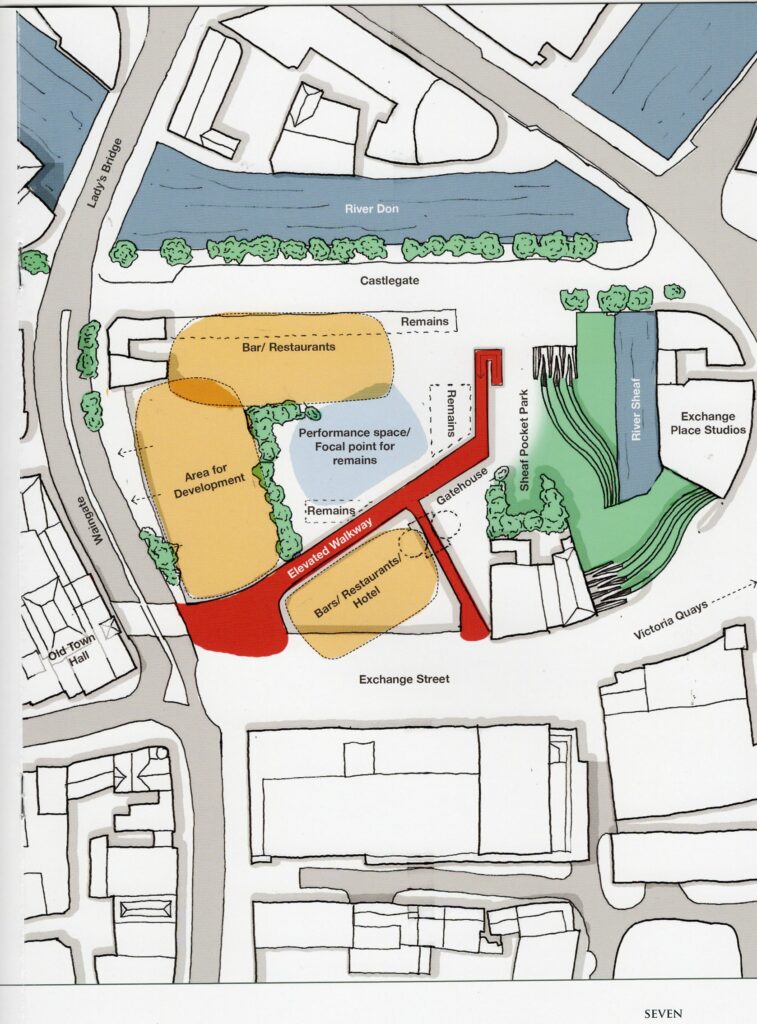Martin Gorman is the Chair of Friends of Sheffield Castle, which he says is really a pressure group trying to make the most of Sheffield Castle. The group consists of a Committee of 12 people and 200 members. Anyone can join for a fee of £5.
The remains of Sheffield Castle were under Castle Market, between Castlegate and Exchange Street. The Market was demolished in 2015 but this has opened up an opportunity to explore the castle’s history and some of the remains of the castle that survive beneath the demolition site.
A brief history of Sheffield Castle.
The Domesday Book recorded that Earl Waltheof (an Anglo-Saxon) Lord of Hallamshire) built a hall on the site in 1086. In 1120 William de Lovetot (a Norman) became Lord of Hallamshire and built a castle.
Supporters of Simon de Montfort’s rebellion destroyed Sheffield Castle in 1266. Thomas De Furnival was given a charter to ‘crenellate’ (rebuild) the castle. This was completed in 1270. The castle became a baronial castle where the local Lords lived.
Mary Queen of Scots was imprisoned in the castle in 1570 until 1584. At times she was kept at Manor Lodge and is thought to have visited Buxton under guard. In the Civil War from 1642 to 1651 the castle was occupied by the Parliamentary forces but in 1643 the Royalists retook it. However, following a heavy bombardment, the Royalist forces surrendered.
By order of Parliament the castle was demolished in 1648, but parts of the footprint of the castle remained. A map of Sheffield, dated 1736, shows a walled bowling green on the castle site.
In the 19th Century the castle site was industrialised with slaughter houses and small steel and tool works, though it still looked ‘castle like’.
The Castle Market was built in the 1930s. During the construction of the market, Leslie Armstrong and Joseph Himsworth recorded details of what was found during excavations for the foundations.
In 2000 ARCUS (Archaeological Research and Consultancy, University of Sheffield) worked on site digging some trenches to see remains of the castle and moat. In 2018 Wessex Archaeology did trenching on site, and modern technology is being used to recreate some of the findings.
Friends of Sheffield Castle think that the castle was one of the largest in England. They want to work in partnership with the City Council and developers to produce a green space, a performance space, bars and restaurants and a display of Castle remains, open for people to view.
Friends of Sheffield Castle have produced a pamphlet detailing their Blueprint For the site.
This was an enthusiastic presentation by Martin and was enjoyed by the audience.


